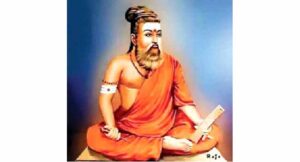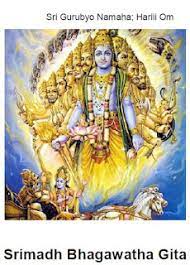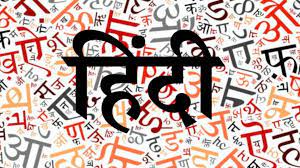

Bhagavad Gita is the gift of Bhartiya culture to the world. Similarly Thirukkural composed by Thiruvalluvar is an eternal guide to the humanity. Sanatana Dharma forms the sub-stratum of the both the holy books.
Bhagavad Gita has over 700 slokas. Among them 574 are Sri Krishna’s nectar-like utterances and explanations. Others are Arjuna’s edicts, lamentations and questions seeking answers for getting his doubts clarified, Sanjaya’s commentaries of the happenings in the battle-ground and his own observations in response to Dritarashtra’s single question at the beginning.
With regard to Thirukkural (henceforth referred as Kural) is a composition of 1330 verses, classified under 133 chapters (known as Adhikaaram) consisting of 10 verses. These 133 chapters are do’s and don’ts related to Dharma, Artha and Kama (Aram, Porul and Inbam respectively in Tamil).
This writer’s conviction is that the soul of the Gita and Kural is one and the same though they were separated by time, space and languages. He states that there are three reasons for his conviction: The notes jotted down by and the basic lessons taught by his father, who was regularly attending fortnightly literary-spiritual meetings guided by many Tamil scholars in Salem in the 1980s that were convened by Krishna Shetty, MBBS whose heart was filled with passion for Tamil and nationalism. Then further reading of Bhagavad Gita Commentary by Swami Chitbhavananda and listening Swami Omkarananda’s discourses in person and over audio-video cassettes or online gave him further clarity. (here it is important to gratefully state that both the Swamijis blessed and supported Rashtriya Swayamsevak Sang and parivaar organisations.)
Let us look into some examples, quoting from Gita and Kural. These verses are indeed few drops of elixir which will serve in liberating us from the delusion we suffer in the worldly life.
In the Gita, Shri Krishna starts his mission of bringing out Arjuna , a great warrior from the steep confusion he got himself mired and false notions which were pushing him to derelict from his duties. For that Krishna firstly defines who is a Sthitapragna (one who abides in God-consciousness and steadfastly adheres to spiritual path) from the 55th sloka of the second chapter to the 72nd sloka. The essence of these slokas provide us with a preliminary idea of Sthitapragna.
He who has renounced desire, fear, duality of love and hate, anger, who withdraws his senses from consumption like a tortoise withdraws its organs into its shell (कूर्मोङ्गानीव ), and who is unaffected by pleasures and pains, is called Sthitapragna.
Even as rivers come and mix from many directions, just as the ocean does not change(आपूर्य्माणमचलप्रथिष्ठं समुद्रम्), Sthitapragna is not affected by the bhogas- that is by the objects and opportunities of pleasure. (Gita 2.70).
Now let us turn to Valluvar for knowing how he explains the concept of mastery over sensory organs. In Thirukkural 126, starting as ‘Orumaiyul Aamai pol .. ஒருமையுள் ஆமை போல்..) he says “ A tortoise draws its limbs within; likewise, in this birth, if one keeps his senses fully controlled, that quality of self-control will remain with him unto seven births.” Here we have to note two significant points. Saint Tiruvalluvar cites the very same example of tortoise to withdraw from external objects of pleasure. The second point clearly confirms that the Kural is founded on the Hindu Dharmic principles of Karma Theory and rebirth.
Earlier, in the same chapter, we read Kural 124 starting with Nilaiyin Thiriyaadu Adangin …நிலையின் திரியாது அடங்கின், which means that the status of an individual who lives modestly without deviating from morality in any situation, will be higher than that of a mountain. Thus both the ocean and mountain as cited by Gita and Kural respectively demonstrates the greatness of determined adherence to Dharma.
Sri Krishna, who defined Sthitapragna in the Gita, teaches in various chapters the principles and habitudes of how one can attain such an exalted position through effort and practice. He explains the necessary virtues as fearlessness (to be understood as courage of conviction arising out of unflinching faith upon the Almighty), purity of heart, control of the senses, almsgiving (charity without vanity) , sacrifice, austerity so on so forth. He says it again and again in order to fix them in our mind. Finally he summarizes the noble qualities in chapter 16 in the first three slokas.
In parallel, Valluvar devotes fourth chapter to emphasise the glory of virtue (Aran Valiyurattal- அறன் வலியுறுத்தல் ) in an overall sense. He further goes to deal with each of these qualities extensively under each chapter (that is 10 verses) such as Love and compassion towards the fellow beings, Ahimsa- not even thinking of causing harm to any creature (Kollaamai – கொல்லாமை) Kind speech, Gratefulness, Good Conduct, Forbearance, Non-covetousness, Not lusting after another’s wife, Benevolence, Charity etc. We can certainly say that these concepts are comparable to the Karma Yoga of the Gita.
Shri Krishna expounds on His virtues at various places, especially in the tenth (Vibhuti yoga) and eleventh (Viswaroopa Darshana yoga) chapters. Finally, as a summary he states the charanaagati tattva – (Unconditional Surrender to Paramaatman) mamekam charanam vraja (मामेकं चरणं व्रज – Gita 18.66).
Saint Tiruvalluvar starts from where Gitacharya left. He stresses the significance of the charanaagati tattva in the second verse of the first chapter (Kadavul Vaazhtu- Adoration on the Lord) which reads as
கற்றதனா லாய பயனென்கொல் வாலறிவன்
நற்றாள் தொழாஅர் எனின்
Karradanaa laaya payanenkol vaalarivan
Narraal thozhaaar enin
This verse says ‘ The Lord is of the form of pure wisdom; without adoring His holy feet, what is the good that will accrue of learning many a lore? (Such study will be fruitless indeed).
He repeats and reemphasises four more times over verse 3 (Malarmisai Ekinaan..மலர்மிசை ஏகினான்..) verse 4 (Venduthal Vendaamai-வேண்டுதல் வேண்டாமை ..) verse 7(Thanakkuvamai Illaathaan – தனக்குவமை இல்லாதான் ..) and verse 8(Aravaazhi Andanan ..அறவாழி அந்தணன் ..).
Even then, Valluvar was not satisfied. He imbibes the meaning of Shri Krishna’s exhortation of going beyond the Trigunas, that is Sattva, Rajas and Tamas, by performing one’s duties without attachment and to ‘Live life like a lotus leaf water’ (पद्मपत्रमिवाम्बसा Gita Ch5.10). Valluvar very beautifully puts it in nutshell as
பற்றுக பற்றற்றான் பற்றினை அப்பற்றைப்
பற்றுக பற்று விடற்கு
Parruka Parrarraan parrinai apparraip
Parruka parru vidarku (Chapter 35 titled Detachment- Kural 350)
This verse conveys that ‘you need to get attached to the Lord, who is free of all attachment, if you wish to acquire the quality of detachment from worldly desires ‘.
We could go on with many such illustrations. I am sure that many Ubayavedaantis (Scholars of Sanskrit and vernacular language in general- Tamil in particular in this context ) have done in-depth studies and produced enough material. In short, the Gita conveys certain things by means of hints and Valluvar expounds them. Similarly, if one wants to understand the real purport of what Thirukkural is saying, it is necessary to approach (with shraddha and bhakti – प्रणिपातेन परिप्रश्नेन सेवया Gita ch4.34) the Masters who have grasped the essence of and live by the Divine Words of Shri Krishna.
Jambunathan

